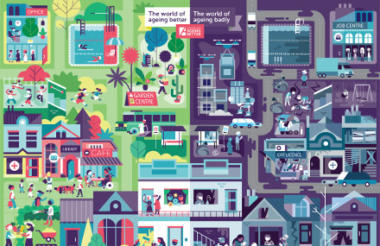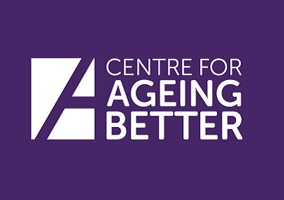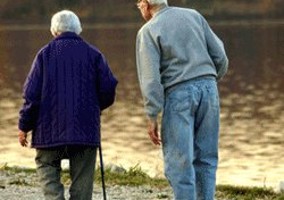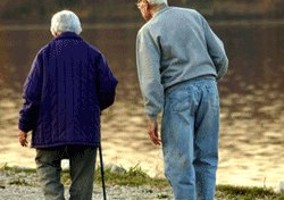We recently published a report on what it’s really like to grow older in Britain today, The State of Ageing in 2019. It provides a snapshot of the people approaching later life today.
Worryingly, it shows serious inequalities among this group.
While many people do very well in later life, a significant proportion are at risk of spending their later lives in poverty and ill-health, unable to get work and living in unsuitable homes.
The report is a call to action to national and local government, communities and voluntary organisations to address the causes of disadvantage and inequality among older people. That way, we can ensure that they and the generations that follow them can enjoy long and happy lives.
Without a radical rethink, the disadvantage and inequality we see in this group today will only become magnified as they enter their later years. And with a rapidly growing older population, the pressure on health and care services, on pension pots and benefits, and on the charities that provide help, will become intolerable. The task we face could well become insurmountable.
Clearly, intervention is required. This includes tackling the causes of preventable ill-health and disability so that people can live as much as possible of their later lives free of illness and disability; ensuring housebuilders build homes – and improve existing homes – so that people can live well and safely across their lifetimes; and embedding age-friendly cultures in the workplace so that people can continue to work, feeling valued and supported, for as long as they desire.
Improvement in these areas will require action by everyone in society. We will need to see national government enacting legislation, for example around reducing the salt content of foodstuffs or enforcing housing standards; statutory bodies must do more to disseminate information on reducing unhealthy behaviours and planning for later life; and employers and employer organisations must embrace age-friendly working practices.
What role is there for the voluntary and community sector?
In developed economies, the VCS plays an essential role in providing social and caring services alongside statutory bodies, the market and the household, all working in various and shifting combinations. The VCS is not a nice-to-have; it is an integral part of the economy of welfare. The VCS is part of the social fabric of communities and plays a vital role in identifying those people who need support and in helping people age well.
Besides work, health and homes, community connections formed a major part of our report because we know that what matters most of all to people are relationships. And as we approach later life, we need to be able to build and sustain strong and supportive relationships across generations.
For people in mid-life and beyond, the picture painted by the research is largely positive; most feel like they belong to their neighbourhoods and most people get to go out socially. However, people aged 65 and over from BAME backgrounds are less likely than white people of the same age to feel they belong to their neighbourhoods. And for those who don’t go out socially, the barriers are poor health and disability, financial reasons, caring responsibilities and not having anyone to go out with.
Most people appear able to access the services they need, but when they can’t the most common reason is poor health. Among people aged 80 and over, poor health is the greatest barrier to using public transport, although among 50-59-year-olds, a large proportion don’t use public transport because it isn’t convenient and doesn’t go where they want to go.
Notably, nearly a quarter of 45-54-year-olds are carers, and even this is likely to be an underestimate. Invisible carers are at great risk within their communities; Carers UK has reported that more than 8 in 10 unpaid carers feel lonely or socially isolated and this, in turn, can have a negative impact on mental and physical wellbeing.
Where can charities have the most benefit?
It is for the people who face challenges within their communities – vulnerable groups; those on low incomes; those with health problems, who can’t get out and who are at risk of social isolation – that the VCS can make the most difference.
In the here and now, and for people of any age, charities and volunteer groups can help make things happen that generally happen naturally within communities through initiatives that bring people together, building relationships and thereby reducing or preventing social isolation. Access to transport in rural areas, for example, will hugely assist in this, as will providing access to volunteering and community action opportunities that are inclusive and accessible to all regardless of age or disability.
And for those people who will reach later life in ten or twenty years from now, it is worth bearing in mind that family structures are changing: more people are divorcing later in life and a high proportion of women in mid-life are single, childless and living alone. This could lead to greater numbers of people needing support in their communities in years to come.
Living for longer provides us with huge opportunities to enjoy ourselves and spend time doing the things we love. Although getting older is inevitable, the way in which we age is not. It is clear that alongside the public and the private sector, charities have a vital role to play in helping people age better.
Aideen Young is evidence manager at the Centre for Ageing Better
Related articles












